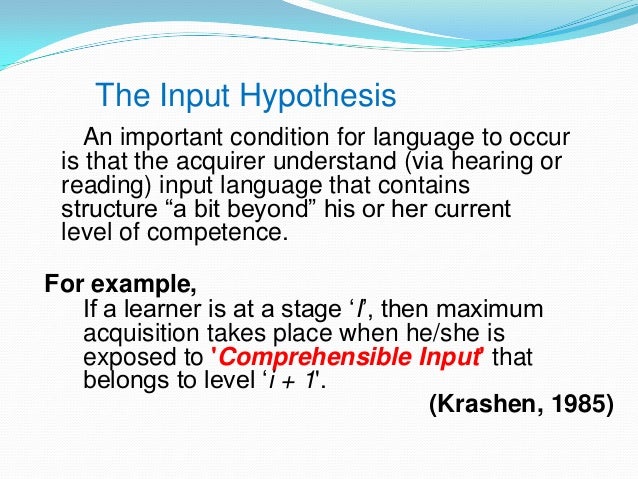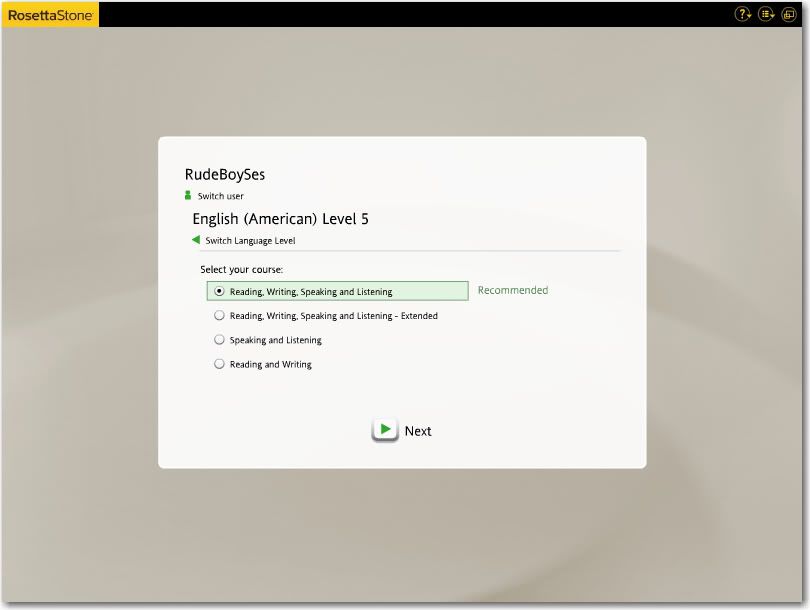Monitor ModelBrief Overview This is a brief overview of the monitor model for the reader to understand the main points. Readers are encouraged to study more in-depth to gain a full appreci ation of the history, development, and implementation of this theory. At the end are guiding questions for the educator to contemplate about instruction and the monitor model.The monitor model is an interesting set of hypotheses that were developed by Stephen Krashen in the late 1970s. The monitor model is interesting because some of its premises have been disproved, but during the 80s and 90s the monitor model was adopted by some educational systems much to their chagrin.
However, this is not to say that this theory is unusable for the language educator, but what is taken from the theory and applied to the classroom must be weighted accordingly.Acquisition-Learning HypothesisThe origin of this hypothesis is completely flawed and science has disproved the basis, but if examined from a different aspect, can be beneficial to instruction.Krashen saw acquisition as subconscious learning that was facilitated by something Chomsky had proposed in universal grammar (UG Theory) called the language acquisition device (LAD). The LAD was a feature in the brain that helped people learn languages, but Chomsky would have to later admit that there was no such thing.If acquisition was subconscious, then the learning part of the hypothesis was what actually happens in the classroom. Since the educator is making the students consciously aware of the information, this was considered learning which is not as affective as acquisition.Although there is no LAD as Krashen had considered when penning this hypothesis, many researchers do note there can be a difference between subconscious learning (acquisition) and conscious learning (learning).How Not To Use. Explicit Teaching Needed: The educational systems that adopted the monitor model were damaged by acquisition-learning hypothesis because grammar was not explicitly taught.


What Is Hypothesis Testing Pdf
As a result, writing suffered immensely because direct instruction of grammar is essential for academic/school writing.How To Use. Learning: Teenagers, young adults, and adults can really benefit from actually learning strategies and explicit grammar instruction. Writing is one of the four skills that benefits most from grammar instruction in older students, so make it part of the curriculum.Monitor HypothesisThe monitor hypothesis involves the acquisition center being monitored by the learning system.
The natural order hypothesis 12 (a) Transitional forms 14 3. The Monitor hypothesis 15 (a) Individual variation in Monitor use 18 4. The input hypothesis 20 (a) Statement of the hypothesis 20 (b) Evidence supporting the hypothesis 22 5. The Affective Filter hypothesis 30 B. The Causative Variable in Second Language Acquisition 32 1. The Input hypothesis This hypothesis suggests that language acquisition occurs when learners receive messages that they can understand, a concept also known as comprehensible input. However, Krashen also suggests that this comprehensible input should be one step beyond the learner’s current language ability, represented as i + 1, in order to.
So the acquisition center would produce language and what the student is/has been learning will allow the student to monitor output. If the output matches, then no problem, but if the language produced is not correct, then the monitoring of the learning system will help correct the acquisition center.However, Krashen warns that over-monitoring can cause language production to be more geared towards accuracy than fluency.How To Use. Accuracy/Fluency: Krashen is correct in stating too much monitoring will impede fluency at the benefit of being accurate. A balance should always be central as being too far on either end of the spectrum is not good for communication.Natural Order HypothesisKrashen states that there is a natural order to acquiring language rules.covers this in more detail along with strategies for use.Input HypothesisThe input hypothesis revolves around students receiving an appropriate amount of input.
However the hypothesis believes it is not just input, but comprehensible input that is easily understood by the learner that will deliver the grammar needed.How Not To Use. Adults: Input and grammar acquisition works for young learners as they have the ability pick up language with proper interaction, but adults do not possess the ability to learn naturally like children. Instead, adults use cognitive strategies to learn complex systems like grammar and benefit from well structure taught input.How To Use. Proper Input: This can be utilized across all instruction and not just grammar. Students not only need input, but they need input that is easy to understand.
Teaching language or teaching materials that are too high for the students do little to progress their language ability or understanding. This is a major key to instruction. Every educator needs to put this near the top of his list of teaching beliefs.Affective Filter HypothesisThis hypothesis suggests affective filter is a mental screen that filters input from reaching the language acquisition center in the brain.
There are many things that can trigger the mental filter such as conscious learning, motivation, stress, classroom environment, confidence, etcHow Not To Use. Broken Record: As stated before, conscious learning of grammatical features is not bad. Conscious learning is beneficial for older learners with the ability to use cognitive reasoning.
For young learners, conscious learning will not be as beneficial.How To Use. Factors Decrease Learning: Although there is no actual filter in the brain, it is well documented that issues such as motivation, stress, classroom temperature, confidence, etc do contribute to a decrease in learning. Any educator who has taught in a sweltering classroom will understand this point. The educator should try to address as many of these issues as possible as environment has a big influence on learning.

Final ThoughtsThe monitor model is based on some flawed premises that really hurt the education systems that adopted this theory. Children may not need explicit grammar teaching to speak fluently, but older learners definitely need explicit grammar teaching to produce quality writing. Speaking and listening are skills that children gain naturally through input, but reading and writing must be learned and teaching is vital for these skills. The ideology at the time was a little faulty, so Krashen cannot be blamed for going with current beliefs. Although many concepts in the monitor model are flawed, there are many bits of information that can be readjusted and used for language teaching.
Steps Of Hypothesis Testing Pdf
As with any theory, there is some falsehood and truth delicately intertwined inside. Educators should find the truths that speak to them and use them to the best of their ability. Hello!i will leave the comment this page.I read interested of this page, because my major is english educationso this page is benefical for me.For example, many ways to teaching students and how deal with students.Young children teaching natural so when teaching they teacher need not explict grammer teachingin contrast, adults are can’t posses the ablity to learn naturally.so when they teaching explict is useful teaching tool.I read this page i learned many useful information Thank you!!.
ChapterPart of thebook series AbstractThe next three chapters look at the ways in which more general theories of second language acquisition have drawn on the type of syntactic evidence and the view of sequence of acquisition discussed in the previous chapter. This chapter is concerned with the Input Hypothesis proposed by Stephen Krashen. During the late 1970s Krashen put forward an account of SLA first known as the Monitor Model after its main claim about the role of monitoring in language learning (Krashen, 1979).
Input Hypothesis Pdf
In the early 1980s this was expanded into a broader-based model, described in Krashen (1981; 1982). The aspect of the model that became most developed was termed the Input Hypothesis, the title of Krashen’s last major theoretical book (Krashen, 1985a) and the name by which the model will be known here.
From the beginning, Krashen’s ideas have been the subject of controversy. The discussion here does not follow all their ramifications but concentrates on the Input Hypothesis as put forward in Krashen (1985a), working back where necessary to earlier formulations. Initially the model will be presented as far as possible through the evidence and claims that he makes himself.
